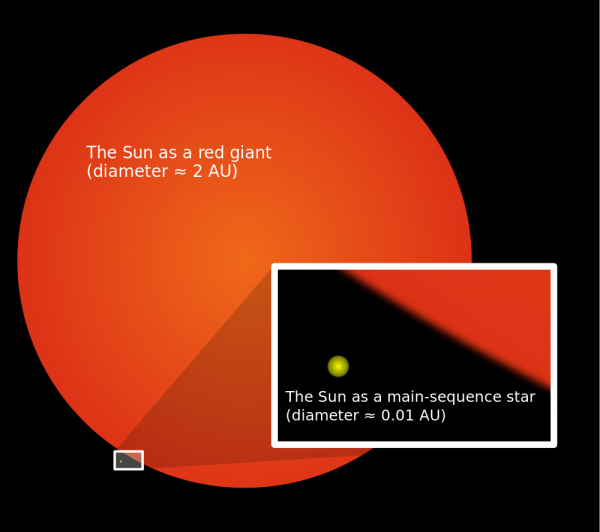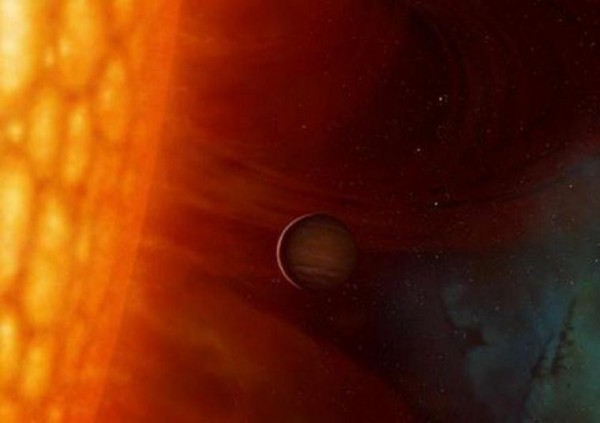“They do not see what lies ahead, when Sun has faded and Moon is dead.” -J.R.R. Tolkien
Someday, the Sun will expand, engulfing Mercury and Venus, and then some. Will we survive?
It's an exciting week, as our long-running Ask Ethan series debuts over at Medium! You can still send in your questions and suggestions here, and tomorrow I'll respond here with the very first installment of comments of the week. But first, here's something you surely wonder about.
Our Sun -- giver of life -- will some day take it all away. In a short one-to-two billion years, it will get so hot that the Earth's oceans will boil. And yet, that's just peanuts compared to what the far future holds, when it expands into a red giant star! Its radius and brightness will increase tremendously, and Mercury and Venus will surely be engulfed.
But what about the Earth?
Go take the journey over to Medium and find out!
- Log in to post comments







What about drag? The earth would be plowing through all that mass the sun is losing as solar wind?
Stellar expansion is just another case of an event that affects natural selection.
This is what I call "the cosmic Darwin test": the ability of intelligent species to migrate to other star systems before their home stars render their original home planets uninhabitable.
For the sake of the Darwinian success of the entire lineage of Earth-originated life, it is incumbent upon us to aim for interstellar migration. A complete program based on today's understanding of physics, and improved space propulsion to low relativistic speeds (a single-digit percentage of c), would take about 6,000 to 8,000 years to get the first colony established in another star system.
We have perhaps a billion years during which conditions on Earth will be "friendly," and another billion years of increasingly hostile conditions up to the point where the oceans boil. So there is no question we have more than sufficient time to do this. (Between now and then we'll also have to deal with space defense against incoming large space rocks, but that problem will become trivial as we become a more capable spacefaring society.)
This, ultimately, is why space exploration is an essential, not "aesthetic" or "academic."
---
BTW, if the US/Russia conflict over Ukraine gets even a little bit hotter, we may find American astronauts unwelcome aboard Soyuz.
This illustrates in stark terms why we need our own lift capability. Today it's about continuing to be active in the ISS program. Tomorrow it will be about getting back to the Moon and going on to Mars.
Don't worry... we won't be around in 1,000,000,000 years.
Ethan, when a star gradually loses mass, at a rate which is long compared to the orbital period of an orbiting planet, what happens to the orbital eccentricity? Does it increase, decrease, or stay the same?
I remember reading once that a spacefaring civilization could extend the time in the goldilocks zone, buy causing gravitational interactions with other stuff orbitting the star, essentially stealing angular momentum and energy from comets and asteroids. This would delay the reconning, although I doubt that in a system like out solar system that there is enough mass/energy/angular momentum in the expand the earths orbital radius by more than a fraction of a percent. But, it is an intriguing possibility.
You seem to be saying that red giant formation coincides with the onset of helium burning to carbon.
According to Jim Kaler of UIUC (one of America’s astronomy heavyweights) there’s a double process, first with hydrogen burning on a helium core and blowing up to an "ordinary" red giant. Then the helium core ignites, and the star contracts somewhat. This is followed by helium burning on a carbon-oxygen core, and the star becomes a bigger red giant.
See the following:
http://stars.astro.illinois.edu/sow/star_intro.html#giants
from the short section "Giant stars" to "Bigger red giants and Miras".